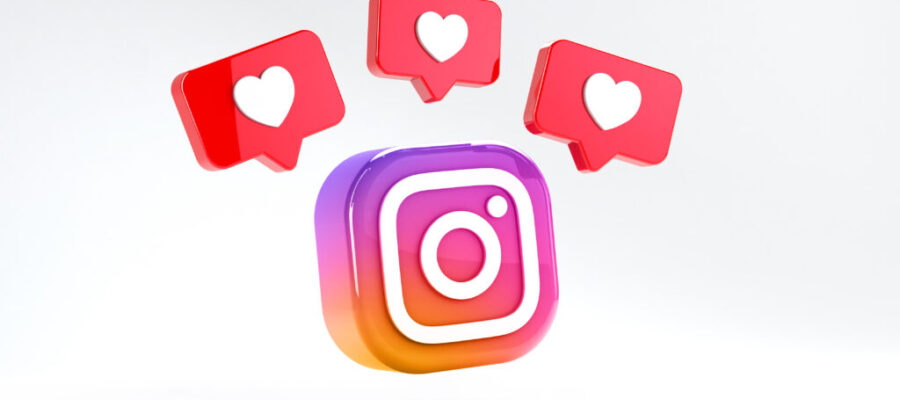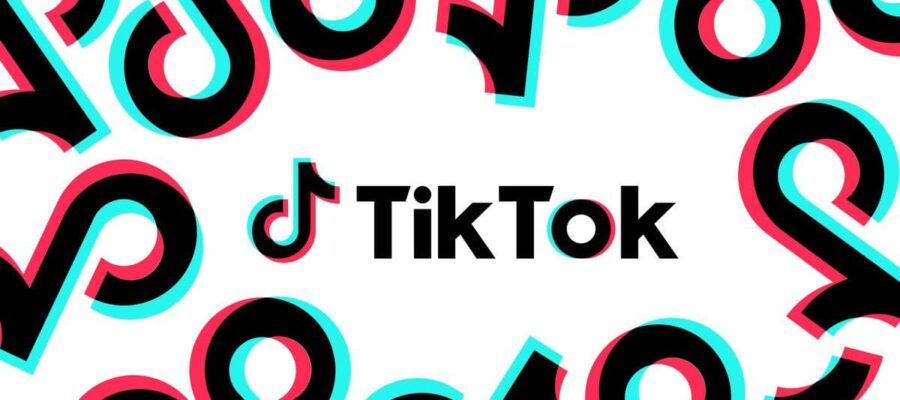
AI-powered chatbot ChatGPT: What Is It and How to Use It?
08/05/2023
How Share of Voice Tools Can Enhance Your Marketing Strategy
12/05/2023Case study: Apple’s Marketing Strategy – EOS Mktg&Communication by Gabriele Lazzari
In this case study below contacted by Gabriele Lazzari from EOS Marketing & Communication company, we will explore the success of the Apple brand based mostly on a unique marketing and communication strategy that manages to attract new customers and turn them into avid fans.
Apple was founded almost fifty years ago by Steve Jobs and has become one of the most famous companies that ever existed, thanks also to its targeted marketing and communication strategies which have made it a unique brand. Capable of creating enormous economic profits and guiding trends throughout the technology market, Apple’s success has made it a symbol not only among its customers but also among those who have never used an Apple product. All Apple products have, in one way or another, revolutionized their target market while maintaining the same unmistakable captivating, and modern style. The Macintosh computer has allowed spreading the use of PCs thanks to its usability, the iPod has substantially contributed to the digitization of the music industry and the iPhone can be considered the first smartphone used on a large scale, on which all the current ones are still based.
Recently, Apple also has dedicated itself to the smartwatch and home-assistant markets, even going so far as to develop its own film and TV series streaming platform. Definitely, these products are very different compared to the ones at the beginning, yet they share the same minimalistic design and testify to the innovative drive of the brand.
So, how was it for a company to differentiate its offer so much, while always maintaining the same
typical characteristics? In this case study by Gabriele Lazzari, we will have a look at his analysis of the pillars of the marketing and communication strategies that Apple has implemented over the years while having a look at his reference to some historical moments of Apple.

The reasons behind Apple’s success
According to countless studies that have been conducted we are going to find out about the secrets that have allowed Apple to become the brand we all know today. Marketers agree in identifying the follow- ing 4 pillars as the basis of the marketing strategy that contributed to Apple’s success:
1 – The positioning
The first pillar is positioning. One of the first things that makes Apple different from all the other competitors on the market is the high costs of its products, or to define it differently is the positioning that the brand has chosen for itself and its offer.
Major competitors generally aimed to offer the lowest possible prices, in order to get closer to more customers, thus Apple has interrupted this habit of the tech world, proposing prices that are above the average but that is also justified by the benefits and by high-quality standards. This meant that Apple was perceived as a niche and alternative, suitable for all those people who were trying to stand out from the crowd. And thus, in addition to selling at a cost far above the market average. The products marketed by Apple have a low production cost but are sold as luxury goods, so the company makes a huge profit from every single sale – which it can reinvest in other services. In the case study Gabrielle Lazzari pointed out that, according to some professionals in the industry, Apple would have “lost the PC war against Microsoft”. Yet, Apple is still one of the most successful companies ever.
2 – The communication
The second pillar of Apple’s marketing strategy is the element of communication. Is the style with which Apple presents and advertises its products: it does not describe their characteristics but uses storytelling to explain how products can allow the audience to achieve the status they aim to.
To fully understand this, we can look for example at the commercial for the Macbook Air, presented as “The world’s thinnest notebook”. Apple has chosen to focus on a particular piece of information (the compact design) conveyed through a simple and direct message that is immediately understandable and easy to remember. It does so by associating the product with something everyone knows: a normal shipping envelope. Apple’s communication uses specific language that anyone can understand. Those who buy a Macbook Pro, for example, are not buying a simple laptop because the RAM is bigger or the graphics card is better, but because they identify with its style and what it represents: a product for a specific type of people, who act according to completely different canons compared to those of the mass and which allows them to define their own personal identity on the basis of that of the brand.
This allowed Apple to diversify its offer and move from computers to smartphones and smartwatches while keeping the credibility of its brand intact. The simplicity of the communication carried out by Apple, which does not waste resources on unnecessary digressions but goes straight to the practical effects that the brand can have on society, can be identified in other aspects. The essential and minimal design of Apple products, for instance, is a distinctive feature since the company’s birth, and the posts on the social media profiles of the brand – or better said, the lack thereof. While dedicated support accounts are extremely active and quick to respond, Apple’s official Facebook page is dedicated only to sponsored ads and profile and cover image updates. Twitter, on the other hand, is completely empty. This a strategy that we wouldn’t suggest to other brands, but which is perfectly in line with Apple’s style.

3- The customer retention
Another aspect that has contributed to Apple’s success is the pillar of customer retention the brand dedicates to its customers. An example of this is the physical store, the Apple Store. Inside, each product is expertly positioned to convey a sense of modernity and innovation. But what really differentiates these shops from the others is the staff, who has to be highly trained and kind. To this end, the clerks use a precise tone of voice, which follows the communication style used by the company. It is not surprising, therefore, that the Apple Stores are considered as the example to follow both for the sales in physical stores and for the direct assistance they can offer to the customer.
But that’s not all: Apple takes care of its customers even after their purchase is successful. After-sales assistance is one of the factors that make the brand stand out: in addition to solving problems as quickly as possible, the brand does not hesitate to completely replace malfunctioning products in order not to upset the customer. This certainly has a high cost, but the customer’s trust is ensured. By doing so, the company has created a real community of fans, who identify with the brand and are highly loyal. The community also makes it possible to leverage the same users as ambassadors, as a means of spreading the Apple message.
4- The Apple ecosystem
The last four pillars are the Apple ecosystem. Right before the commercialization of the Mac, the more tech-savvy people preferred to buy different computer components and then assemble them all by themselves. Apple has instead changed this habit, revolutionizing the way in which technology is conceived: no longer several single elements, but a product in its entirety.
Apple has in fact developed its offer in order to create a real digital ecosystem that generates a sort of addiction in the consumer: after buying an iPhone, it is likely that the customer will proceed with the purchase of AirPods, an iPad or an Apple Watch: different kinds of products that are, however, extremely compatible and complementary. Especially in the past, the Cupertino company’s products were not compatible with external devices, so users were “forced” to depend on Apple. Even today, Apple devices often need specific chargers or earphones, which are sold by the company through cross-selling, the practice of promoting – during the purchase or immediately afterward – a complementary product to what the user is buying.
Apple in order to help users, has intensively focused on the ease of synchronization between all its products, so as to make it possible to transfer all data and all content automatically and immediately. This made it much easier to switch to a new and updated device, as is the case with iPhones. Change can bring uncertainty and fear to users’ minds, so Apple has applied the simplicity that has always distinguished the brand to this as well, in order to try to reassure users during the transition to the next model.
According to Lazzari, one could even go so far as to argue that Apple actually sells only one type of product: its own ecosystem. This allows to eliminate the decision-making process that the consumer would face. In addition, he added that it also simplifies the work of the staff within the Apple Stores: they do not have to know infinite models of smartphones or tablets and, if there is a problem, they can immediately deal with it. Therefore, through all these marketing and communication strategies, Apple has come to have its brand as- sociated with innovation, minimalism, and reliability. Some commentators have even called Apple a “cult- brand”, to highlight the almost total devotion that customers (or rather fans) have towards the company.
Lazzari continued his study by looking specifically at some of the most famous and important marketing campaigns developed by Apple over the years:

Apple II
The first ad worth mentioning is the one created for the Apple II, the first user-friendly personal computer produced on an industrial scale. After previewing at a trade show in 1977, the subsequent marketing campaign included printed ads in tech magazines. The illustration showed the uses of the computer in a home environment and the colorful screen. This campaign also included a restyling of Apple’s logo. Previously, it showed Isaac Newton under an apple tree, while the new one was more minimal and simpler: a rainbow-colored apple, with the name of the computer added to it.
From here on, the logo would have been made more and more minimal, up to the simple black-colored bitten apple used today.
1984
The first memorable commercial was the one launched on the occasion of the Super Bowl in 1984. In the short video, entitled 1984, Apple presented the first historic Macintosh personal computer to the general public. The commercial (directed by Ridley Scott), which earned the company the prestigious Clio Award, refers to George Orwell’s novel: in a grey world, devoid of creativity, where all people look alike and are controlled by soldiers, a girl breaks the screen of a gigantic television from which the famous logo of the bitten apple with the colors of the rainbow appears, signaling the breaking point with the past and the established patterns. The Macintosh has, in fact, made it possible to expand accessibility to personal computers by creating a product with an intuitive interface and within everyone’s reach, not just the most experts. As you can see from this spot, however, the focus of the communication is not based on the ease of use or its technical characteristics, but on the benefits that Apple can bring: this computer can change society.
Apple 1984 Super Bowl Commercial Introducing Macintosh Computer (HD) – YouTube https://www.youtube.com/watch?v=2zfqw8nhUwA
Think Different
A little more than 10 years later, Apple released another commercial in which the famous slogan “Think Different” debuted, that has then become a symbol of Apple’s nonconformist attitude. This short film includes historical figures such as Albert Einstein, Muhammad Ali, Gandhi, and Martin Luther King, precisely to symbolize the innovative aspect of Apple and how it stands out from the crowd. Although it cannot be considered a complete success, given the criticisms that have emerged for having compared these eminent figures to the brand, this advertising campaign by Apple is among those that have most shaped its identity in the collective imagination.
Apple – Think Different – Full Version – YouTube https://www.youtube.com/watch?v=5sMBhDv4sik
The silhouettes
In order to promote the first iPod Touch, a product that distanced itself from the marketed mp3 players, Apple made a series of videos that have become known as “Silhouettes”. Maintaining the well-established minimal style, the commercials included silhouettes dancing to the rhythm of the music, with white earphones and iPods on display. A clear reference to the iconic commercial of a few years earlier dedicated to the launch of the first iPod, which saw a person insert headphones into their ears and start dancing.
Jet iPod commercial – YouTube https://www.youtube.com/watch?v=4CPab8U5zTU
The various videos featured not only anonymous dancers but also famous musicians and singers such as Paul McCartney, Eminem, Daft Punk, and The Black Eyed Peas. It is also worth spending a few words on the aforementioned earphones, as Apple stood out even with such a simple object. In fact, in a sea of black earphones, Apple’s earphones were the first to be white, thus collaborating to break the mold and make the product immediately recognizable even to the eyes of the casual observer.
Finally, the case study looked at the future marketing strategies Apple may use:
Apple has stood out for the functionality and aesthetics of its products and for the style with which it communicates and comes into contact with its target audience. The attention paid to its customers, the message it conveys and its positioning have made it one of the most successful companies in the world. As proof of this, there are the countless expectations placed on the brand every time it announces a new product, which a launch is an event for fans and the curious ones as well – the images of fans camping outside the stores in order to secure the latest model on sale are unforgettable. Having proven to know how to differentiate its offerings in the past, it is reasonable to expect that Apple’s success will continue to persist in the future. It will be interesting to continue to observe their marketing and communication strategies, perhaps even to take inspiration from them. One thing is certain: the Apple brand will certainly not change its style in the short term.
Source and Article by: EOS Marketing. it – https://eosmarketing.it/en/apple-case-study-marketing-communication-strategy/
Find more information here: http://bit.ly/2BPQn38
For more information contact us at: [email protected]





